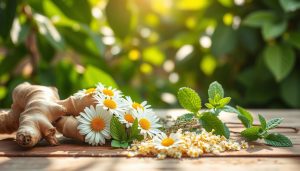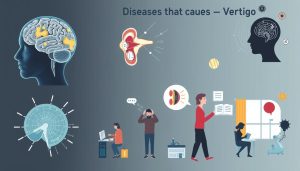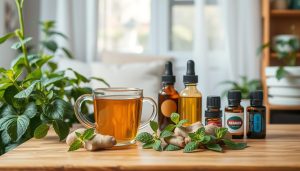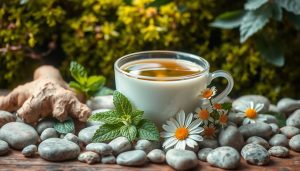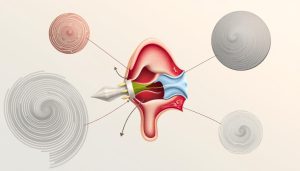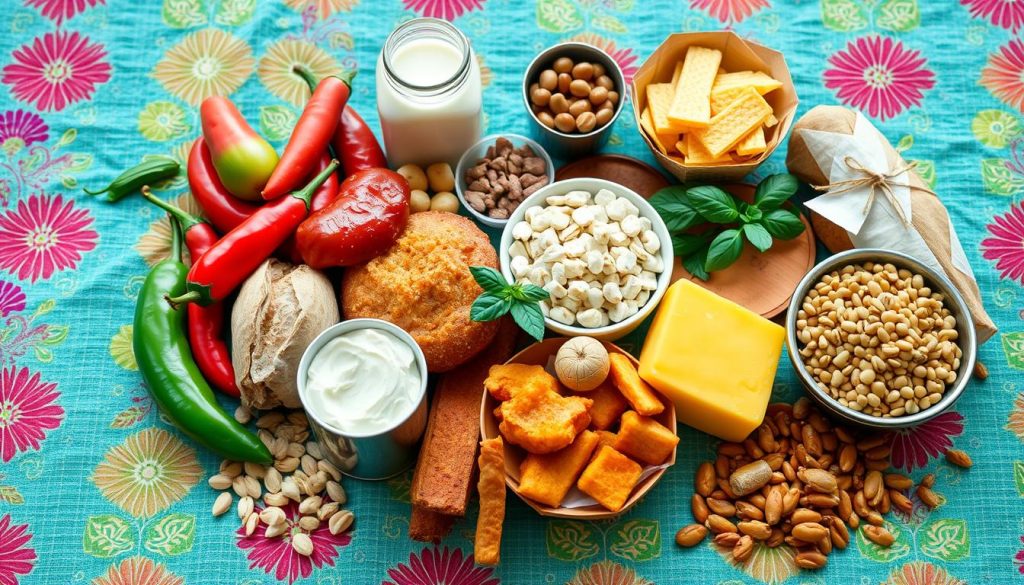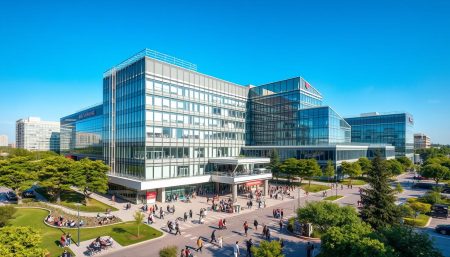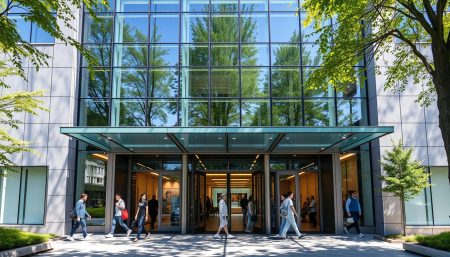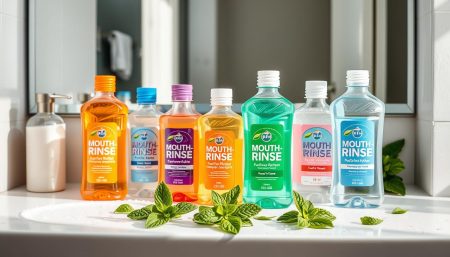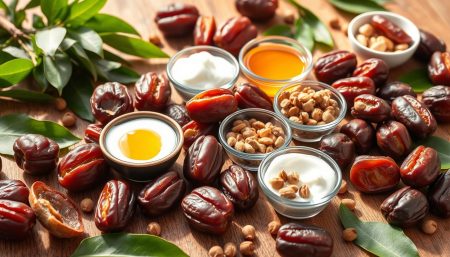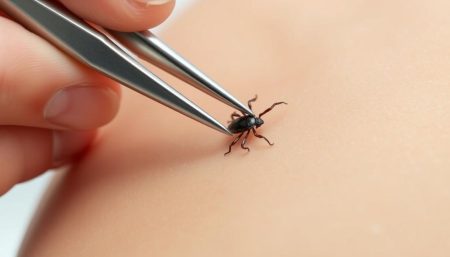When you have diarrhoea, what you eat matters a lot. Finding the best diet for diarrhoea can help you feel better faster. This guide will show you what foods to avoid and what to eat instead.
We’ll give you a diarrhea prevention diet that includes foods and drinks to avoid. We’ll also suggest safe alternatives to help your stomach feel better. Learn how to prevent future episodes and improve your digestive health.
Understanding Diarrhoea: Essentials of Digestive Health
Diarrhoea affects millions each year, impacting digestive health a lot. Knowing how it works and what triggers it can help a lot. This part talks about diarrhoea, how it affects the gut, and why certain foods are bad.
Diarrhoea is a sign of trouble in the gut. It can be caused by many things, like infections or bad food choices. To feel better, you need to know what foods to avoid and what to eat instead:
- Knowing which foods make diarrhoea worse or better
- How drinking water helps your gut
- Following a special diet to keep your gut healthy
Sticking to a diarrhoea diet restrictions can help a lot. It makes your gut healthier and can stop future problems. This way, you can feel better and keep your gut in good shape.
| Factor | Impact on Digestive Health | Role in Diarrhoea Prevention |
|---|---|---|
| Dietary Fiber | Helps digestion but too much can be bad | Good but don’t eat too much |
| Hydration Levels | Very important for your gut | Helps keep stool soft and moves it well |
| Irritant Foods | Can cause diarrhoea | Avoiding them is key |
In short, changing your diet to fight diarrhoea is more than just avoiding bad foods. It’s about finding the right balance for your digestive health. By choosing your food wisely, you can stay healthy and feel good, even with diarrhoea.
Common Triggers: Foods That Cause Diarrhoea
Diarrhoea can be caused by certain foods. These foods can upset your stomach or make bowel movements too frequent. Knowing which foods that cause diarrhoea can help you avoid them.
High-Fat Foods and Diarrhoea: The Link
Foods high in fats, like fried foods and creamy sauces, can cause stomach discomfort. They make food move through your system too fast. This means less water is absorbed, leading to loose stools.
Sugar Alcohols and Artificial Sweeteners: Hidden Culprits
Sugar alcohols and artificial sweeteners, found in sugar-free treats, are big culprits. They include sorbitol, mannitol, and aspartame. These can act like laxatives, making stools softer and more frequent.
Here’s a list of foods that trigger diarrhoea. If you get diarrhoea often, try to eat less of these:
| Food Category | Examples | Reasons They Trigger Diarrhoea |
|---|---|---|
| High-fat foods | Fried chicken, pizza, heavy cream sauces | Increases intestinal motility |
| Sugar Alcohols | Sugar-free gum, diet soft drinks, sugar-free desserts | Laxative effect, increases colonic water |
| Artificial Sweeteners | Diet candies, low-calorie desserts, artificial sweetener packets | Draw water into the colon, causing watery stools |
| Dairy Products (for lactose intolerant individuals) | Milk, cheese, yogurt | Lactose can cause bloating, gas, and diarrhoea |
| Spicy Foods | Hot sauces, curries, spicy snacks | Can irritate the digestive tract |
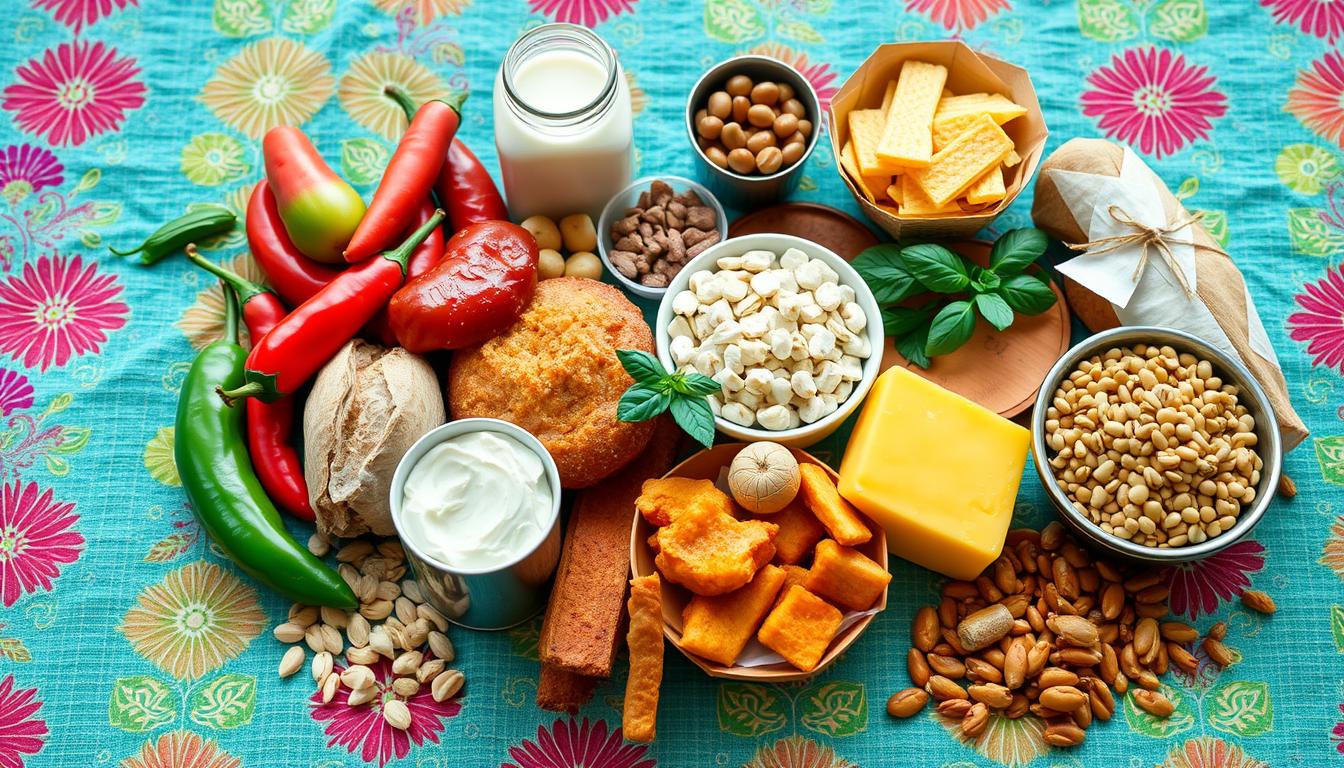
Knowing which foods trigger diarrhoea can help you manage symptoms. Making small changes in your diet can greatly improve your digestive health. This might mean eating less of high-fat foods or avoiding artificial sweeteners.
Dehydration and Diarrhoea: Foods and Drinks that Worsen Symptoms
Managing diarrhoea well is key to staying healthy, mainly when avoiding dehydration. Some foods and drinks can make dehydration worse, making it harder to get better. Knowing which foods to avoid with diarrhoea helps prevent symptoms from getting worse and speeds up healing.
High-sodium foods are big trouble for dehydration. They pull water from your body’s cells into your intestines, then out through diarrhoea. Drinks with alcohol and caffeine also cause dehydration because they make you lose more water.
| Category | Examples | Impact on Dehydration |
|---|---|---|
| High-Sodium Foods | Processed meats, canned soups, chips | Increases bodily fluid loss |
| Alcoholic Beverages | Beer, wine, spirits | Promotes diuresis and fluid loss |
| Caffeinated Drinks | Coffee, tea, some soft drinks | Stimulates increased urinary output |
To fight dehydration when you have diarrhoea, cut down on these foods and drinks. Drink more water, electrolyte solutions, and clear broths to replace lost fluids and minerals. Staying hydrated is key for getting better and is a smart move in diarrhoea management.
- Avoid high-sodium snacks and meals during episodes of diarrhoea.
- Steer clear of alcohol and caffeine as they can significantly inhibit hydration.
- Incorporate hydrating beverages that aid in replenishing electrolytes.
Being careful about foods to avoid with diarrhoea can really help with how bad symptoms are and how fast you get better. Choosing the right drinks and foods helps manage diarrhoea better, reducing dehydration risks.
Foods to Avoid with Diarrhoea: A Complete Guide
Knowing what not to eat when you have diarrhoea is key to feeling better. This guide lists foods to avoid with diarrhoea. It helps you follow diarrhoea diet restrictions well.
Some foods can make diarrhoea worse. They are hard to digest when you’re sick. Here are the main types of foods to avoid:
- Dairy Products: Many people find dairy hard to digest when they have diarrhoea.
- Fatty Foods: Foods high in fat, like greasy or fried items, can make diarrhoea worse.
- Highly Seasoned or Spicy Foods: Spicy or heavily seasoned foods can upset your stomach and make diarrhoea worse.
- Artificial Sweeteners: These are found in diet foods and can make diarrhoea symptoms worse.
- High-Fiber Vegetables: Foods like broccoli, cauliflower, beans, and onions can cause gas and make diarrhoea worse if eaten too much.
The table below gives more details on foods to avoid with diarrhoea. It helps you manage your diet better:
| Food Category | Examples | Reason to Avoid |
|---|---|---|
| Fruits | Apples, peaches | High fructose content can increase diarrhoeal output |
| Sweet Snacks | Cakes, cookies | High sugar levels can draw more water into the bowel, worsening diarrhoea |
| Beverages | Coffee, carbonated drinks | Caffeine and gases can irritate the digestive system |
Changing your diet to follow diarrhoea diet restrictions can help a lot. It can make you feel better faster. Always talk to a doctor to make a diet plan that’s right for you when you’re feeling sick.
Spicy Foods: A No-No for Diarrhoea Sufferers
When you have diarrhoea, what you eat matters a lot. Foods that trigger diarrhoea include spicy foods. These can make your symptoms worse and slow down your recovery.
Spicy foods have capsaicin, which irritates your stomach. This can cause cramps, bloating, and more frequent bowel movements. Knowing what to avoid is key to feeling better.
- Capsaicin as an irritant
- Increased GI tract motility
- Enhanced sensitivity during diarrhoea episodes
Here’s a simple list of spicy foods to skip when you have diarrhoea:
| Food | Description | Reason to Avoid |
|---|---|---|
| Hot peppers | Includes jalapeños, habaneros, and chili peppers | High capsaicin content increases digestive distress |
| Curry | Spice mix often used in South Asian cuisine | Complex spices can trigger and aggravate diarrhoea |
| Hot sauces | Sauces made mainly from chili peppers | Can cause significant irritation to the GI tract |
Staying away from these spicy foods can help reduce irritation. It’s important to follow a diarrhoea diet restrictions that helps you feel better and heal faster.
Caffeine and Alcohol: Their Role in Digestive Distress
Managing diarrhoea means knowing what to eat and what to avoid. Caffeine and alcohol are big no-nos because they upset the stomach. Drinking them when you have diarrhoea can make things worse and slow down healing.
Why Caffeine Can Be Problematic During Diarrhoea
Diarrhoea quickly takes away water and salts from the body. Caffeine makes this worse by causing more dehydration. It’s important to stay hydrated when you have diarrhoea, so caffeine is a big no.
Caffeine also makes the stomach empty faster and can make bowel movements more frequent. This is not good when you’re trying to get better.
The Impact of Alcohol on Diarrhoea Symptoms
Alcohol can also irritate the stomach lining, making diarrhoea symptoms worse. It makes it harder for the body to absorb nutrients and increases the amount of fluid in the intestines. This is bad news when you’re fighting off diarrhoea.
Alcohol also dehydrates the body, making it harder to keep fluids in balance. This is something to avoid when you have diarrhoea.
So, not drinking caffeine and alcohol can really help you get better. It helps keep the digestive system stable and reduces diarrhoea symptoms.
Dairy Products and Lactose: Considerations for Diarrhoea
Understanding the role of dairy products and lactose is key when dealing with diarrhoea. Many find these items hard to digest, making them foods to avoid. This is true, mainly for those who are lactose intolerant.
Diarrhoea can make lactose intolerance worse, even for those not usually affected. This is because diarrhoea irritates the digestive tract. It makes it harder for the body to break down lactose, the sugar in milk.
The table below lists common dairy products and their lactose content. It helps guide what to eat when you have diarrhoea:
| Dairy Product | Lactose Content |
|---|---|
| Milk (1 cup) | 12-13g |
| Cheddar Cheese (1 oz) | 0.2g |
| Yogurt (1 cup) | 5g |
| Butter (1 tbsp) | 0.1g |
If you have diarrhoea, it’s smart to choose low-lactose or lactose-free options. This includes almond or soy milk. Reducing dairy can help ease diarrhoea symptoms.
- Avoid full-fat milk and cream to ease digestion.
- Go for aged, hard cheeses like Parmesan or Swiss.
- Try probiotic yogurts to help your gut health.
In summary, while dairy is good for many, its lactose can be a problem with diarrhoea. Knowing which foods to avoid with diarrhoea and adjusting your diet is key to feeling better.
Fries, Chips, and Other Processed Snacks: Dangers for Diarrhoea Relief
Knowing which foods to avoid with diarrhoea is key to feeling better. Processed snacks like fries and chips are bad because they’re hard to digest. They can make diarrhoea worse.
These snacks are full of fat and salt, which makes your stomach work harder. The oils in them, like in fries and chips, can make your body release hormones that make diarrhoea worse. Plus, they often have artificial stuff that makes symptoms worse and slows down getting better.
This part will look at what’s in these snacks and how they affect you:
| Snack Type | Main Ingredients | Reason to Avoid |
|---|---|---|
| Fries | Potatoes, Salt, Oil | High fat content slows digestion, aggravating diarrhoea symptoms |
| Chips | Potatoes or Corn, Salt, Artificial Flavors | Sodium and additives can dehydrate and irritate the intestinal lining |
To help with diarrhoea, avoid these high-fat foods. Instead, try plain, boiled potatoes or make your own snacks with little oil and salt. Remember, picking the right foods is important for easing symptoms and getting better faster.
Legumes and Diarrhoea: What You Need to Know
Legumes are known for their fiber and nutritional value. But, they can also cause diarrhoea in some people. This section looks into why and how certain beans might upset sensitive stomachs.
The Complex Relationship Between Beans and Digestive Issues
Beans are a key part of many diets because of their protein and fiber. But, these same qualities can upset the stomach. The fiber in beans helps with bowel movements but can also cause gas and diarrhoea, mainly in those with digestive problems.
How to Identify Legumes that Trigger Diarrhoea
Finding out which legumes cause diarrhoea can take some time. But, some common ones include chickpeas, lentils, and certain beans like black beans and kidney beans. Paying attention to how your body reacts after eating these can help figure out which ones are troublemakers.
| Legume Type | Common Digestive Reactions |
|---|---|
| Chickpeas | Gas, bloating, and occasional diarrhoea |
| Lentils | Mild to severe diarrhoea, depending on quantity |
| Black Beans | Gas and bloating; diarrhoea in sensitive individuals |
| Kidney Beans | Severe gas and possible diarrhoea triggers |
Nuts and Seeds: Hard to Digest
When you have diarrhoea, your body can’t handle some foods as well. Nuts and seeds are usually good for you but can be tough to digest. They have a lot of fiber and fat, which can make diarrhoea worse.
Knowing what foods to avoid is key when you’re feeling sick. Steer clear of nuts and seeds to help your body recover faster. Here’s why they might not be good for you when you have diarrhoea.
| Food Type | Reasons to Avoid During Diarrhoea | Alternative Suggestions |
|---|---|---|
| Almonds | High in fats and fibers which complicate digestion. | Ripe bananas or mashed potatoes |
| Sunflower Seeds | Fibers can irritate an already sensitive digestive tract. | White rice or plain toast |
| Flaxseeds | Oils and fibers slow down recovery from diarrhoea. | Boiled vegetables or broths |
Following diarrhoea diet restrictions helps ease symptoms and prevents longer digestive problems. This is because nuts and seeds are hard to digest and can slow down healing.
Whole Grains vs. Refined Grains: Making the Right Choice During Diarrhoea
Choosing the right grain is key when you have diarrhoea. It’s important to know the difference between whole grains and refined grains. This helps pick a diet that’s easy on your stomach but also gives you the nutrients you need.
Fiber Content and Its Effects on Diarrhoea
Whole grains are great for managing diarrhoea because they’re full of fiber. Unlike refined grains, whole grains keep all parts of the grain kernel. This means you get more nutrients and fiber.
Fiber helps make your stool solid and slows down digestion. This is very helpful when you have diarrhoea. But, start with small amounts of fiber. Too much can make symptoms worse.
Selecting Grains That Help Instead of Harm
When picking grains, look for ones that are easy to digest and have less fiber when you’re really sick. Refined grains might not be as nutritious, but they can be better when you’re feeling really bad. They have less fiber because they’re processed to remove the bran and germ.
| Grain Type | Fiber Content | Recommended Use During Diarrhoea |
|---|---|---|
| Whole Wheat | High | Limited quantities |
| White Rice | Low | Preferred for easier digestion |
| Oatmeal | Moderate | Consume in moderation |
| Refined Pasta | Low | Recommended when symptoms are severe |
It might seem odd to choose refined grains when you’re sick, but they can help. They’re less likely to irritate your stomach. So, the choice between whole and refined grains depends on how bad your symptoms are and how your body reacts.
Sweet Treats and Diarrhoea: The Surprising Connection
Many people turn to sweet treats for comfort or celebration. But, few link these treats to digestive issues like diarrhoea. Certain candies and chocolates have laxative effects. This part explains how sweets can worsen diarrhoea symptoms and suggests foods to avoid with diarrhoea.
Chocolates and Sweets: Hidden Laxative Effects
Chocolates and sweets often have lots of sugar and artificial sweeteners. These can draw water into the colon, making bowel movements faster. Dark chocolate’s caffeine also adds to its laxative effects. It’s wise to eat these sweet treats in moderation to avoid digestive problems.
Identifying High-Sugar Foods to Limit During Diarrhoea
Finding high-sugar foods among many snacks and desserts can be tough. Here’s a table to help. It lists common sweet treats and their sugar content. This can guide you in choosing better options when you have diarrhoea.
| Treat | Sugar Content | Notes |
|---|---|---|
| Milk Chocolate Bar | 20g per bar | Contains caffeine |
| Gummy Bears | 15g per serving | High in fructose |
| Ice Cream | 28g per scoop | Often contains dairy |
It’s important to watch out for laxative effects of ingredients, too. This is key when you’re dealing with diarrhoea. Cutting down on these high-sugar foods can help lessen diarrhoea’s impact.
Artificial Additives and Preservatives: Known Irritants in Diarrhoea
Managing diarrhoea means knowing how artificial additives and preservatives can cause it. These are in many processed foods to make them taste better, last longer, or feel different. But they can upset your stomach.
These additives can make your stomach lining upset, leading to fast bowel movements. This is a sign of diarrhoea. It’s important to check food labels for these ingredients to avoid discomfort.
Let’s look at some common additives and preservatives that can upset your stomach:
- Monosodium Glutamate (MSG): Found in many processed snacks, it can cause diarrhoea and other stomach problems.
- Artificial Sweeteners, like aspartame and sucralose: In diet sodas and sugar-free candies, they can make some people have diarrhoea.
- Sodium Benzoate: In sodas, it can make your bowel move too fast, leading to urgent diarrhoea.
- Nitrates and Nitrites: In cured meats, they can upset your stomach’s natural balance and make diarrhoea worse.
Knowing what additives to avoid can help manage or prevent diarrhoea. A good tip is to eat fresh, unprocessed foods and always check food labels for these diarrhoea triggers.
In short, while artificial additives and preservatives make food more appealing and last longer, they can also upset your stomach and cause diarrhoea. Knowing and avoiding them can help control this uncomfortable issue.
Fatty Meats: Difficulties in Digestion and Diarrhoea
Managing diarrhoea means knowing how certain foods affect digestion. Fatty meats, including red and processed meats, are hard to digest. They can make diarrhoea worse.
Red Meats and Diarrhoea: A Troublesome Duo
Red meats have a lot of fat that can make diarrhoea worse. The fat slows down digestion, causing more discomfort. Choosing leaner meats or other proteins can help.
Poultry with Skin and Processed Meats: Possible Triggers
Poultry with skin and processed meats can also trigger diarrhoea. The skin on poultry has a lot of fat, like red meats. Processed meats have additives and sodium that can upset digestion and worsen diarrhoea.
| Type of Meat | Fat Content | Recommendation During Diarrhoea |
|---|---|---|
| Beef (Fatty Cut) | High | Avoid |
| Pork (Fatty Cut) | High | Avoid |
| Chicken with skin | Medium-High | Avoid |
| Processed meats like sausages | Varies | Avoid due to additives |
| Lamb | High | Avoid |
For those with diarrhoea, avoiding fatty meats and processed meats is best. Eating low-fat, easy-to-digest foods can help reduce diarrhoea symptoms.
Diarrhoea Friendly Foods: Safe Alternatives to Support Recovery
Choosing the right foods is key when you have diarrhoea. Diarrhea friendly foods can calm your stomach and help you heal faster. This part talks about how the BRAT diet and hydrating foods are good choices to ease symptoms and help your body get better.
The Role of BRAT Diet in Managing Diarrhoea
The BRAT diet, short for Bananas, Rice, Applesauce, and Toast, is known for easing upset stomachs and reducing diarrhoea. These foods are simple and mild, making them gentle on your stomach. They help reduce irritation. Here’s how each part of the BRAT diet helps you recover:
- Bananas: They’re full of potassium and easy to digest, helping replace lost nutrients.
- Rice: It’s a binding food that makes stools firmer and gives energy without upsetting your stomach.
- Applesauce: It’s a good source of pectin, helping to bind stools.
- Toast: It’s a low-fiber, bland food that soothes your stomach and is easy to digest.
Hydrating Foods that Soothe the Digestive System
Staying hydrated is important when you have diarrhoea. Drinking lots of fluids is key, but eating hydrating foods also helps. These foods include:
- Cucumbers: They’re 95% water, making them great for rehydration and gentle on your stomach.
- Watermelons: Another water-rich fruit that helps with hydration and adds important vitamins.
- Broth-based soups: They’re warm and soothing, helping to replace lost fluids and salts.
Eating these diarrhea friendly foods can make you feel better faster. It’s important to slowly add other foods back into your diet and watch how your body reacts.
Meal Planning Tips for a Diarrhoea Prevention Diet
Planning meals for a diarrhoea prevention diet can be tough. But, with the right tips, it can become easy. It’s not just about avoiding bad foods. It’s about eating in a way that helps your digestive system.
Start by using foods like banana, rice, applesauce, and toast. These are part of the BRAT diet. They help keep your digestive system stable.
Managing your diet means watching how your body reacts to food. Plan meals with foods high in soluble fiber, like oats and peeled fruits. They help make your stools firmer.
But, be careful with foods high in insoluble fiber, like whole grains and veggies. They might make symptoms worse during a flare-up. Choose cooking methods like grilling, baking, or steaming. They don’t add extra fats that can make things worse.
Don’t forget to drink plenty of water. Add hydrating foods like cucumbers or melons to your meals. This helps keep you hydrated and supports your digestive health.
While it might seem hard to follow, the right meal planning can make a big difference. It keeps your diet interesting and helps your digestive system stay healthy.
FAQ
Q: What are the best practices for diet management when experiencing diarrhoea?
A: When you have diarrhoea, avoid foods and drinks that make it worse. Stick to bland, easy-to-digest foods. Drink lots of fluids and eat small meals often until you feel better.
Q: Can certain foods disrupt my digestive health and contribute to diarrhoea?
A: Yes, foods high in fat, sugar alcohols, artificial sweeteners, caffeine, and dairy can upset your stomach. If you’re lactose intolerant, dairy is a big no-no. Try to avoid these foods to prevent diarrhoea.
Q: Which foods and drinks should I avoid to prevent dehydration during diarrhoea?
A: Stay away from alcohol, caffeine, and salty foods to avoid dehydration. Drink water, clear broths, and oral rehydration solutions instead.
Q: Are there specific types of foods that should be completely avoided when suffering from diarrhoea?
A: Yes, avoid spicy foods, fatty meats, dairy, high-fat snacks, nuts, seeds, legumes, and whole grains with lots of fiber. Also, steer clear of foods with artificial additives and preservatives until your diarrhoea goes away.
Q: Why are spicy foods not recommended for individuals with diarrhoea?
A: Spicy foods contain capsaicin, which can irritate your stomach and make diarrhoea worse. It’s best to skip spicy foods to ease discomfort and speed up recovery.
Q: How do caffeine and alcohol affect diarrhoea symptoms?
A: Caffeine and alcohol can make you urinate more, leading to dehydration. They can also irritate your stomach, prolonging diarrhoea. It’s wise to avoid them to help your body recover faster.
Q: What is the impact of dairy products on diarrhoea, especialy for those who are lactose intolerant?
A: Dairy products contain lactose, which can be hard to digest for those with lactose intolerance. This can make diarrhoea worse. It’s best to avoid dairy until your symptoms improve.
Q: Why should I be cautious about consuming fries, chips, and other processed snacks when I have diarrhoea?
A: Processed snacks are high in fat and salt, which can worsen diarrhoea. They’re also hard to digest and may have additives that irritate your stomach. It’s best to limit them until you’re feeling better.
Q: Are beans and other legumes bad for diarrhoea?
A: Legumes are nutritious but high in fiber, making them hard to digest during diarrhoea. It’s wise to eat them in moderation and find ones that agree with you as you recover.
Q: What should I know about nuts and seeds if I have diarrhoea?
A: Nuts and seeds are high in fiber and fat, making them tough to digest during diarrhoea. It’s best to be cautious or avoid them until your stomach recovers.
Q: How should I alter my grain consumption during an episode of diarrhoea?
A: Choose refined grains over whole grains when you have diarrhoea. Refined grains have less fiber, which is easier on a sensitive stomach.
Q: Can sweet treats exacerbate diarrhoea symptoms?
A: Yes, chocolates and high-sugar foods can have laxative effects and worsen diarrhoea. It’s best to limit them until your symptoms improve.
Q: How do artificial additives and preservatives contribute to diarrhoea?
A: Artificial additives and preservatives can irritate your stomach. They can trigger or worsen diarrhoea. It’s best to avoid them during episodes of digestive distress.
Q: Why are fatty meats challenging for digestion during diarrhoea?
A: Fatty meats, including red meats and poultry with skin, are hard to digest. They can prolong diarrhoea symptoms. Opt for leaner protein sources during recovery.
Q: What are some diarrhea-friendly foods that support recovery?
A: Foods like bananas, rice, applesauce, and toast (BRAT diet) are gentle on the stomach. Clear broths and gelatin are also hydrating and supportive during recovery.
Q: How can meal planning contribute to preventing diarrhoea?
A: Meal planning helps you eat a balanced diet with foods that are easy on your stomach. It ensures you get enough nutrition without overwhelming your digestive system. Small, frequent meals can help prevent diarrhoea.


